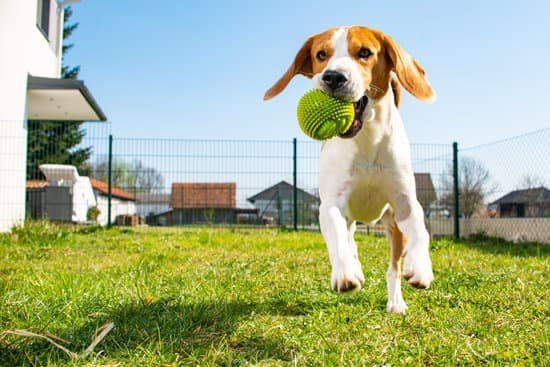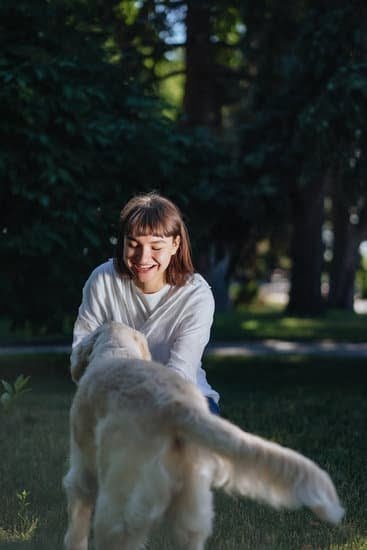Is your furry friend having trouble with bladder control? Many pet owners may find themselves asking, “How to train a dog to hold its bladder?” Understanding the importance of bladder control in dogs is essential for their overall well-being. In this article, we will explore the various methods and techniques for effectively training your dog to hold its bladder.
Proper bladder control is crucial for your dog’s physical health and overall comfort. Without proper training, they may experience discomfort, anxiety, and even health issues related to holding their urine for prolonged periods. By understanding the significance of bladder control in dogs, you can take proactive steps to help them develop this important skill.
Recognizing the signs that your dog needs bladder training is the first step towards addressing this issue. Whether it’s frequent accidents indoors or an inability to wait when nature calls, being aware of these signs can help you identify when your pet needs additional support in developing healthy bladder habits.
In the following sections, we will delve into practical strategies and tips for successful bladder training, ultimately enhancing the quality of life for both you and your beloved canine companion.
Signs That Your Dog Needs Bladder Training
Recognizing the Signs
It’s important for dog owners to recognize the signs that their pet may need bladder training. Some common indicators that your dog may need help in this area include frequent accidents indoors, straining to urinate, or dribbling urine when they’re not trying to go. In some cases, a dog may also excessively lick its genital area due to discomfort from a urinary issue.
Age and Health Factors
Certain factors such as age and health can also affect a dog’s bladder control. Puppies, for example, will naturally have less control over their bladders compared to adult dogs. Similarly, older dogs may experience urinary incontinence as a result of aging or health issues. Understanding these factors can help dog owners tailor their training methods to best suit their pet’s needs.
Consulting With a Veterinarian
If you notice any signs that suggest your dog needs bladder training, it’s crucial to consult with a veterinarian. They can help rule out any underlying medical conditions that could be contributing to the problem. Once any medical issues are addressed, then you can focus on implementing training strategies to improve your dog’s bladder control.
Setting a Regular Feeding and Bathroom Schedule
Start by feeding your dog at the same time every day, ideally 2-3 times per day depending on their age and breed. This will help regulate their digestion and make it easier for you to predict when they will need to go outside. Additionally, take your dog out for bathroom breaks at consistent times throughout the day, such as first thing in the morning, after meals, and before bedtime.
When setting a regular schedule for your dog’s bathroom breaks, keep in mind that puppies may need to go out more frequently than adult dogs. Be patient and understanding of their needs as they are still learning bladder control. Over time, they will become accustomed to the routine and be better able to hold their bladder for longer periods of time.
Remember that accidents may happen during the training process, but being patient and maintaining a consistent schedule will ultimately help your dog develop better bladder control. With time and dedication, setting a regular feeding and bathroom schedule will contribute greatly to the success of your dog’s bladder training.
Utilizing Crate Training for Bladder Control
Introduction to Crate Training
Crate training can be a highly effective method for teaching a dog to hold its bladder. The idea behind crate training is that it takes advantage of a dog’s natural instincts as a den animal. When properly introduced to a crate, dogs will see it as their safe and comfortable space, making them less likely to urinate or defecate inside it. This makes it an invaluable tool for bladder control training.
Choosing the Right Crate
When using crate training for bladder control, it’s important to select the right crate for your dog. The crate should be large enough for your dog to stand up, lie down, and turn around comfortably, but not so large that it gives them enough space to relieve themselves in one corner and still have room to sleep in another. The crate should also come with a comfortable mat or bedding for your dog to rest on.
Implementing Crate Training
To start with crate training, introduce your dog to the crate gradually. Allow them to explore the area without any pressure. Once they are comfortable going into the crate willingly, start feeding them their meals inside the crate with the door open.
Then gradually progress to closing the door for short periods while they are eating. It’s important to make the experience positive and comforting for your dog. With consistent and patient training, your dog will begin seeing the crate as a safe place and will learn how to control its bladder while inside.
Positive Reinforcement and Rewards for Successful Bathroom Trips
When it comes to training your dog to hold its bladder, positive reinforcement plays a crucial role in the process. Dogs, like humans, respond well to rewards and praises when they exhibit the desired behavior. Here are some effective ways to use positive reinforcement and rewards for successful bathroom trips:
– **Verbal Praise**: Whenever your dog successfully goes to the bathroom outside, be sure to shower them with verbal praises such as “Good boy/girl.” or “Well done.” This positive affirmation helps them associate going potty in the right place with something desirable.
– **Treats**: Using treats as a reward for good behavior is a classic method in dog training. Keep a stash of special treats reserved specifically for successful bathroom trips. When your dog does its business outside, immediately give them a treat to create a positive association with outdoor potty time.
– **Playtime**: Some dogs are more motivated by playtime than food treats. If your furry friend falls into this category, consider incorporating short play sessions as a reward for successful bathroom trips. This not only reinforces their good behavior but also helps strengthen the bond between you and your pet.
By consistently using positive reinforcement and rewards, you can effectively encourage your dog to continue exhibiting the desired bladder control behavior. Remember that patience is key in training, so be consistent and persistent in rewarding your dog for successful bathroom trips.
Understanding the Role of Exercise in Bladder Control
Exercise plays a crucial role in maintaining bladder control in dogs. Regular physical activity helps in strengthening the pelvic floor muscles, which are essential for controlling the bladder. In addition, exercise helps to regulate the digestive system, leading to more predictable bathroom habits for your furry friend. Here are some ways you can incorporate exercise into your dog’s routine to promote better bladder control:
- Daily walks: Taking your dog for regular walks not only provides exercise but also gives them an opportunity to relieve themselves outside. Aim for at least 30 minutes of walking each day, divided into shorter sessions if needed.
- Active playtime: Engage your dog in interactive play sessions that encourage movement and physical activity. This can include playing fetch, tug-of-war, or engaging in agility training.
- Mental stimulation: Incorporating mental stimulation activities such as puzzle toys or training exercises can help reduce stress and anxiety, which can have a positive impact on bladder control.
It’s important to note that every dog has different exercise needs based on their breed, age, and overall health condition. Consulting with a veterinarian can help you determine an appropriate exercise routine that will benefit your dog’s bladder control. Overall, making physical activity a priority in your dog’s daily routine can contribute to better bladder control and overall well-being.
Managing and Minimizing Accidents Indoors
Accidents are inevitable during the bladder training process. It is crucial to understand that these accidents are a part of the learning curve for your dog. Despite your best efforts, accidents will happen. However, it’s essential not to scold or punish your dog for these accidents. Instead, focus on encouraging and reinforcing positive behavior.
When you catch your dog in the act of having an accident indoors, interrupt them by using a verbal cue like “outside” or “bathroom.” Then, take them outside to their designated bathroom area. This will help them associate going potty with being outdoors and encourage them to hold their bladder until they are in the appropriate location.
In addition to this approach, it’s important to thoroughly clean any indoor accidents to eliminate lingering odors that may attract your dog back to the same spot. Use an enzymatic cleaner specifically designed for pet messes to ensure that the scent is completely eradicated.
| Bladder Training Tip | Details |
|---|---|
| Interrupt Indoor Accidents | Use a verbal cue like “outside” and take them to their designated bathroom area. |
| Clean Thoroughly | Use an enzymatic cleaner designed for pet messes to eliminate lingering odors. |
Seeking Professional Help for Persistent Bladder Control Issues
While most dogs can be trained to have good bladder control with the right techniques, some may have persistent issues that require professional intervention. If your dog continues to struggle with urinary incontinence or is unable to hold its bladder despite consistent training efforts, it may be time to seek the expertise of a veterinarian or a certified dog trainer.
One common cause of persistent bladder control issues in dogs is an underlying medical condition, such as a urinary tract infection or bladder stones. These health problems can make it difficult for dogs to control their bladders, leading to frequent accidents indoors. A veterinarian can conduct a thorough examination and run diagnostic tests to identify any potential health issues that may be contributing to your dog’s bladder control problems.
In addition to medical conditions, behavioral issues or anxiety can also impact a dog’s ability to hold its bladder. A certified dog trainer can assess your pet’s behavior and provide additional guidance on training techniques that specifically target your dog’s unique challenges. With professional help, you can develop a personalized plan that addresses both the physical and psychological aspects of your dog’s bladder control.
Overall, seeking professional help for persistent bladder control issues demonstrates your commitment to providing the best care for your furry companion. By working closely with experienced professionals, you can address any underlying causes of your dog’s bladder control problems and implement effective strategies for long-term success.
| Bladder Control Issues | Professional Intervention |
|---|---|
| Underlying Medical Conditions | Veterinarian Examination and Diagnostic Tests |
| Behavioral Issues or Anxiety | Certified Dog Trainer Assessment and Training Techniques |
Additional Tips for Successful Bladder Training
In addition to setting a regular feeding and bathroom schedule, utilizing crate training, and using positive reinforcement, there are several other tips that can help in successfully training a dog to hold its bladder. One important tip is to avoid punishing your dog for accidents indoors. Punishment can lead to fear and anxiety in your dog, which can actually make bladder control issues worse. Instead, focus on reinforcing good behavior and providing encouragement.
Another tip is to be patient and consistent. Bladder training takes time and every dog learns at their own pace. It’s important to remain patient and consistent with the training methods you choose. Also, be mindful of any changes in your dog’s routine or environment that may affect their bladder control. Stress or anxiety can affect a dog’s ability to hold its bladder, so it’s important to address any potential triggers.
Additionally, consider keeping a journal or log of your dog’s bathroom habits during the training process. This can help you track progress, identify patterns or triggers for accidents, and make adjustments to the training plan as needed. By being proactive about monitoring your dog’s progress, you can better understand what methods are working and where additional support may be needed in their bladder control training.
Conclusion
Successfully training a dog to hold its bladder is a significant achievement that requires patience, consistency, and positive reinforcement. As a responsible pet owner, it is important to celebrate the success of your dog’s bladder control training. By following a regular feeding and bathroom schedule, utilizing crate training, and providing ample exercise, you have played a crucial role in helping your dog develop good bladder control habits.
Maintaining bladder control in dogs is an ongoing process that requires continued diligence. It is important to consistently reinforce the positive behaviors that you have instilled in your dog through praise and rewards. Additionally, staying attuned to any changes in your dog’s behavior or health can help identify any potential issues with bladder control before they become problematic.
In some cases, despite all efforts at home, persistent bladder control issues may require professional help. If accidents indoors continue despite training efforts, it may be beneficial to consult with a veterinarian or animal behaviorist to address any underlying medical or behavioral issues.
Remember that every dog is unique, and it may take time and additional support to successfully maintain bladder control for some pets. With dedication and attention to their needs, you can contribute to your pet’s overall health and well-being by fostering good bladder control habits.
Frequently Asked Questions
How Do I Teach My Dog to Hold His Bladder?
Teaching your dog to hold his bladder starts with establishing a regular potty schedule. Take your dog outside frequently, especially after meals and naps, and give him plenty of opportunities to relieve himself.
When he does go outside, be sure to praise and reward him. Gradually increase the time between bathroom breaks to help your dog learn to hold his bladder for longer periods.
How Do I Stop My Dog From Peeing in the House?
To stop your dog from peeing in the house, it’s important to first rule out any potential medical issues that could be causing accidents. Once medical issues are ruled out, focus on closely supervising your dog indoors, especially when they haven’t been recently taken outside.
Reward your dog when they go to the bathroom outside, and thoroughly clean any indoor accidents to remove lingering odors that may attract them back to the same spot.
At What Age Can Dogs Control Their Bladder?
Dogs can start gaining more control over their bladders around 4-6 months of age, but every dog is different. Large breeds may take longer than smaller breeds to develop full bladder control. It’s important to be patient and keep working on training and reinforcing good potty habits until your dog reaches this milestone developmentally.

Welcome to the blog! I am a professional dog trainer and have been working with dogs for many years. In this blog, I will be discussing various topics related to dog training, including tips, tricks, and advice. I hope you find this information helpful and informative. Thanks for reading!





